Julia Cooper and Ian Duddle organised a visit to Natural England’s Ashford Hill National Nature Reserve on Saturday 25 May. It was a welcome warm and sunny morning, after many cold or wet days. Local volunteer Bob Winfield led the walk, assisted by fellow volunteer Lorraine Cusworth. Most members met at the new car park across the road from the local primary school, while a few waited at the track leading up to the reserve entrance. Bob led the group into the reserve. It lies in a valley bottom with the Baughurst Brook running through, on its way to join the River Enborne. The woods to the north of the reserve are on a dry sandy bank and the drainage water from there is acidic. Some of the meadows dry out in the summer and are cut for hay, some are permanently waterlogged and others are managed by grazing. The reserve has been managed for many years by cutting and grazing, with very little or no fertilizer use. The walk started out through a very wet field. In a pond on the right of the path was a big clump of Greater Tussock-sedge; Water Forget-me-not and Pink Water-speedwell were in flower and Water-plantain was just coming into flower. The path was edged with Meadow Buttercup, Cuckooflower, Red Clover, Gypsywort and Yellow Rattle. A Comma butterfly was spotted on the tangle of bramble on the left of the path. Invertebrates seen near the entrance to the reserve included a Brown China-mark moth, a Long-jawed Orb-weaver spider, a Nettle Weevil, a Hairy Shieldbug and a mating pair of Large Red Damselflies.
The path crossed the brook and led into a mostly dry pasture which was full of ant hills made by the Yellow Meadow Ant. The first section of the field was wet, and here Ragged-robin, Creeping-Jenny and Marsh Ragwort were seen. Continuing into the main dry part of the field, Pignut flowers carpeted the grass and Tormentil and Sheep’s Sorrel indicated the acid nature of the soil. There were spikes of Germander and Heath Speedwell, plus Lesser Stitchwort, Common Bird’s-foot-trefoil and Heath and Lady’s Bedstraw. Dyer’s Greenweed, not yet in flower, was found on top of a few of the anthills. Beneath a Broom bush were the brown spikes of Greater Broomrape. Nearby was a swarm of orchids – Heath and Common Spotted-orchids and many hybrids between the two species. Bob then led the group to a particularly wet area on the east side of the field where Water-violet, Wild Angelica, Marsh Thistle, Meadow Thistle and Yellow Iris were found. Returning to a higher and drier part of the field, a Common Blue and two Small Copper butterflies were seen, together with a Silver Y moth. Mother Shipton and Burnet Companion moths were also seen in this field.
The next section of the walk was along a boardwalk which followed the northern bank of the brook eastwards. The stream channel had been deepened, with steep vertical edges. Bob commented that the stream was very shady with no interesting species in the water. Tall multi-stemmed Alders lined the banks. Some of the Alders were dead, having been infected by Phytophthora alni for at least 20 years. Sightings from the boardwalk included Yellow Pimpernel, Guelder-rose, Brooklime, Opposite-leaved Golden-saxifrage, Water Figwort and Bog Stitchwort. Both Banded and Beautiful Demoiselles were observed during the walk. A path to the left of the boardwalk led up to a boggy area where Meadowsweet and Ragged-robin were in flower. A flock of Goldfinches flew across here. The walk continued along the edge of a sunny field where Red Admiral and Speckled Wood butterflies were seen. The field had been rolled in an attempt to reduce the Bracken cover. Bob then led the group across the stream and back along the edge of a field which will be cut for hay when it has dried out. The field was yellow with the flowers of Meadow Buttercup and Yellow-rattle. Many years of the latter as a semi-parasite had reduced the volume of the grass in the hay crop. The path led back to the reserve entrance.
After the morning session, seven members stayed behind for a picnic and another walk around the reserve. First stop was the field across the road from the reserve entrance which is part of the SSSI. Sightings here included two Marsh Stitchwort plants and Tubular Water-dropwort. The group then set off to walk a circuit through Redlands Copse, a wood with coppiced Hazel, Wood Sage and Wood Melick which lies to the north of the reserve and is part of the woodland section of the SSSI. They stopped for a picnic in a clearing off the path where birch had been felled. A pair of Nuthatches flew in and out of their nest in a hole in a nearby tree. The hole size had been reduced by plastering mud across part of the entrance. One of the adult birds was observed removing a faecal sac from the nest. Continuing to the top of the hill, a wasp was seen pollinating a Common Figwort flower. Trailing St John’s-wort and Bog Stitchwort were seen in this part of the walk. The route turned southwards along a farm track. Bees were nesting less than a metre above the ground in a hole in a tree. The next track led south-westwards, with Common Cow-wheat abundant along its edge. It was suggested that it had become established at a time when the location was more shaded. The track then turned south-eastwards, passed a pond and crossed a stream which comes down from Inhurst and is a tributary of Baughurst Brook. There were many blue damselflies and a Broad-bodied Chaser dragonfly flew over the pond. The path continued past a very large Broom bush which was in full flower, and re-entered the reserve at the far end of the field which had been rolled to reduce the Bracken cover. Marsh Valerian is dioecious, with male and female flowers on different plants. Both were present in a boggy area, together with Marsh Bedstraw, Marsh Speedwell, Ragged-robin, Meadowsweet, Wild Angelica, Square-stalked St John’s-wort and Changing Forget-me-not. A female Orange-tip butterfly was seen. The return route crossed the ant-hill pasture. A Common Buzzard flew over Redlands Copse and a Whitethroat was singing.
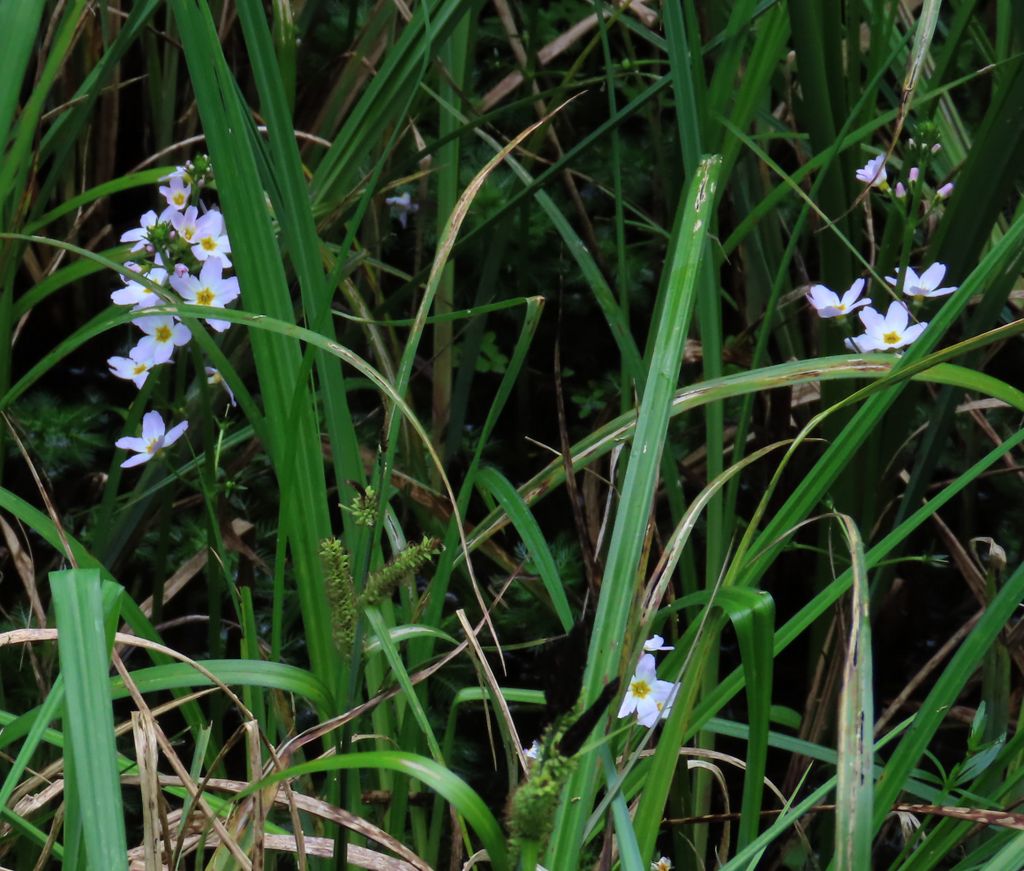
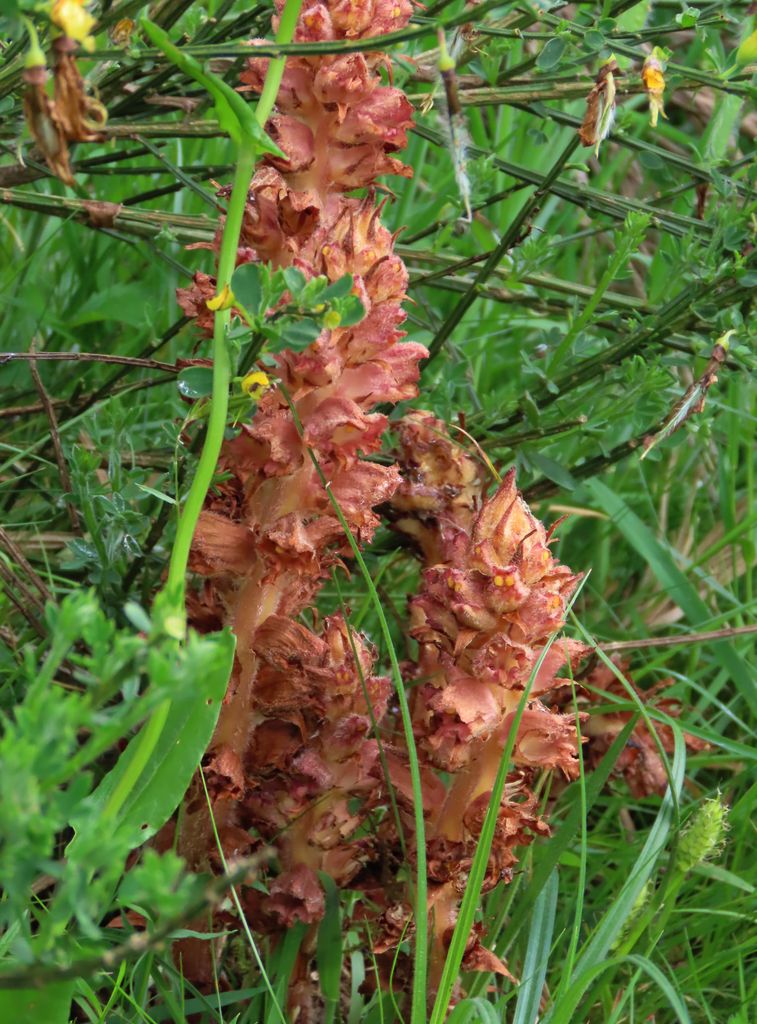
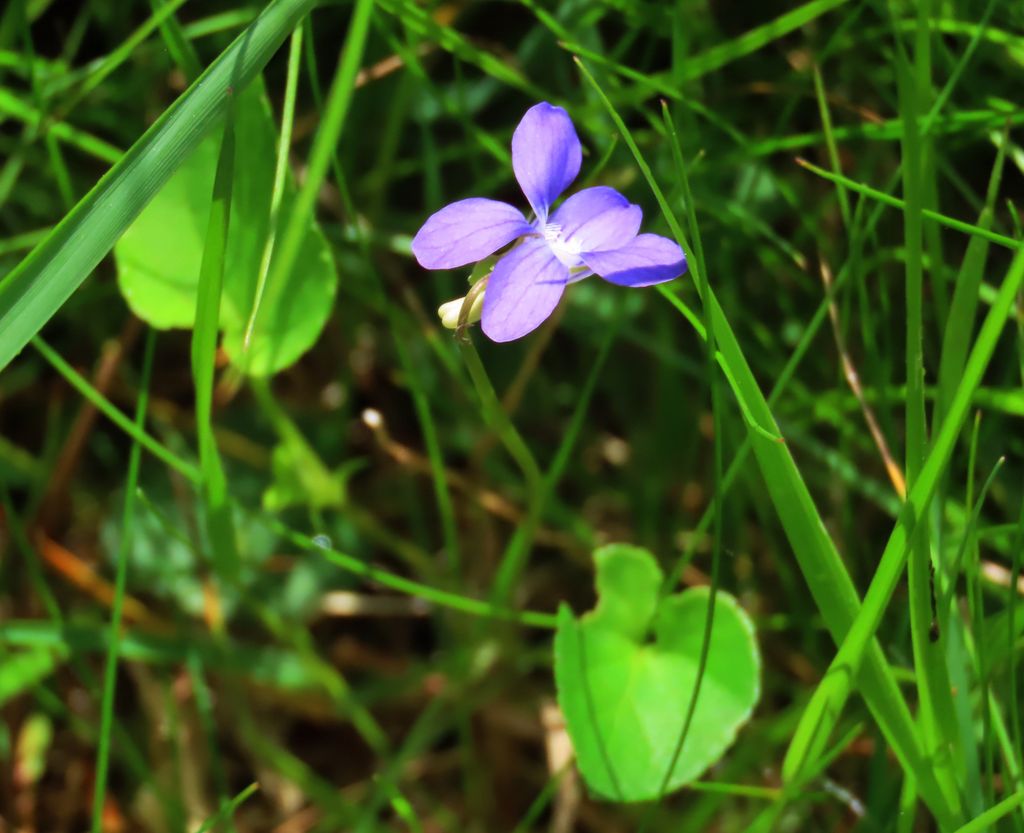

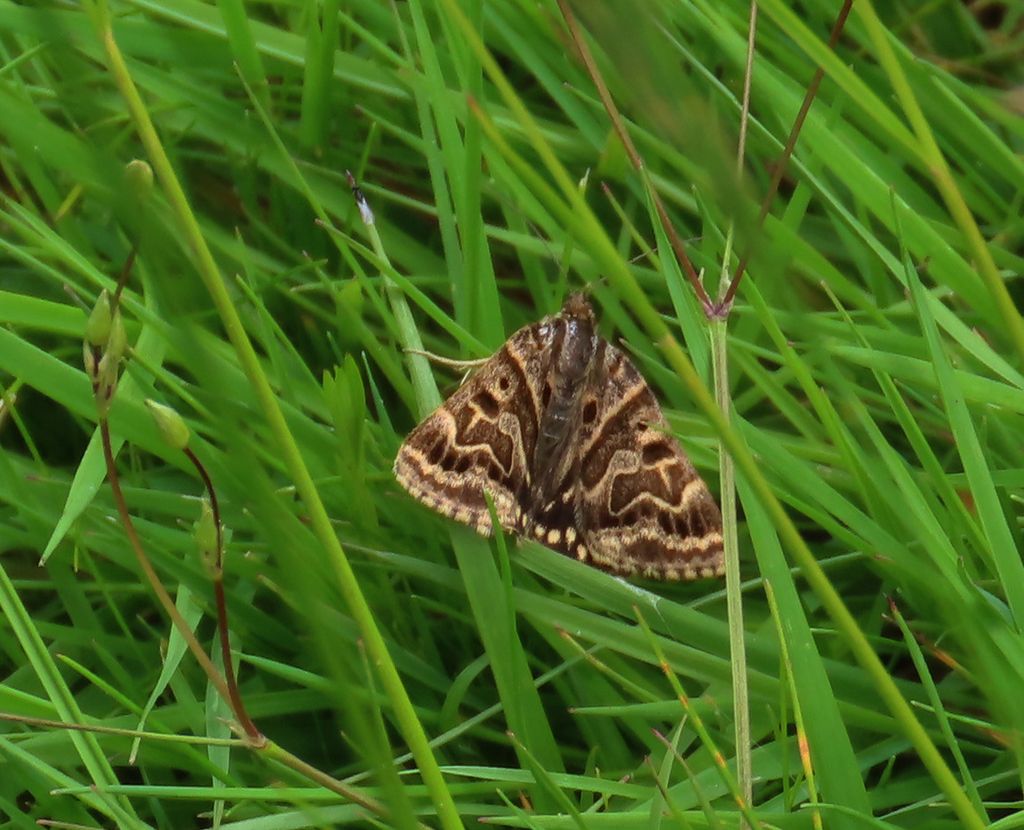
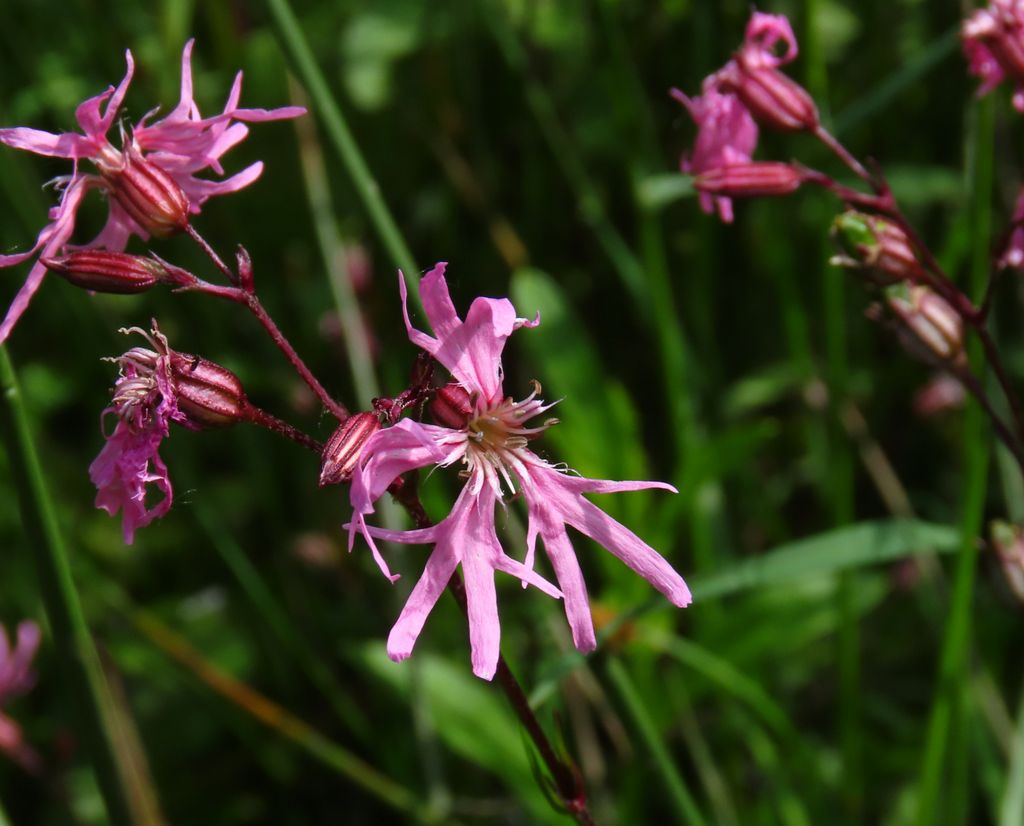
Pictures by Rob Stallard
